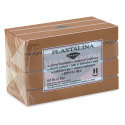What Is Roseville Pottery
Roseville Pottery holds a special place in the hearts of collectors and enthusiasts worldwide. This American art pottery company, founded in Roseville, Ohio, in the late 19th century, produced exquisite ceramic pieces that have become highly sought after over time.
In this article, we will explore the history, characteristics, collecting aspects, identification techniques, caring tips, and famous designs associated with Roseville Pottery.
Introduction
Roseville Pottery emerged during the Arts and Crafts movement in the United States. It quickly gained popularity for its beautiful and innovative designs, blending functionality with artistic aesthetics. Let’s delve into the captivating story behind this renowned pottery brand.
History of Roseville Pottery
The journey of Roseville Pottery began in 1890 when George F. Young established the company in Roseville, Ohio. Initially, the pottery produced simple household items such as flowerpots and stoneware. However, as the demand for decorative ceramics increased, Roseville Pottery evolved to create more ornate and intricate pieces.
By the early 20th century, Roseville Pottery had attracted talented artists and designers. Frederick H. Rhead, a renowned ceramist, joined the company and played a significant role in shaping its artistic direction. Under Rhead’s influence, Roseville Pottery developed a distinct style characterized by bold colors, intricate relief patterns, and natural motifs.
Characteristics and Styles of Roseville Pottery
Roseville Pottery encompassed various styles and lines throughout its existence. The company’s designs can be categorized into different periods, each reflecting the prevailing artistic influences of the time. Some notable styles include:
- Early Experimental Period (1890-1900): This phase featured traditional shapes and glazes, focusing on functionality rather than ornate decoration.
- Middle Period (1900-1916): During this time, Roseville Pottery embraced the Arts and Crafts movement, showcasing intricate hand-carved relief designs inspired by nature, such as flowers, leaves, and animals.
- Late Period (1916-1954): In this era, Roseville Pottery embraced Art Deco and Art Moderne styles. The designs became more streamlined, with geometric shapes and bold, vibrant colors.
Collecting Roseville Pottery
Collecting Roseville Pottery can be an exciting and rewarding hobby. Whether you are a novice collector or an experienced enthusiast, here are some factors to consider when building your collection:
- Condition: Look for pieces in excellent condition with minimal damage or restoration, as this significantly affects their value.
- Rarity: The scarcity of certain designs or patterns can increase their desirability and value.
- Authenticity: Ensure that the piece you are acquiring is a genuine Roseville Pottery creation by checking for appropriate markings and signatures.
Popular Roseville Pottery pieces sought after by collectors include the “Futura” line, known for its sleek Art Deco designs, and the “Freesia” line, which features delicate floral patterns.
Roseville Pottery Values
Determining the value of Roseville Pottery can be a complex task influenced by several factors. Some key considerations include:
- Rarity: Rare pieces are generally more valuable due to their scarcity.
- Condition: Pristine pieces with minimal flaws command higher prices.
- Demand: Designs that are highly sought after by collectors may have higher values.
Notable auction sales have showcased the enduring appeal of Roseville Pottery. For instance, a rare and exceptional Roseville “Blackberry” jardiniere sold for $7,500 at an auction, highlighting the significant worth attributed to certain pieces.
How to Identify Roseville Pottery
Identifying genuine Roseville Pottery involves recognizing specific markings, signatures, and visual characteristics. Here are some tips to help you in the identification process:
- Markings and Signatures: Roseville Pottery pieces are typically marked with an impressed or raised signature. These markings often include the Roseville name, shape number, and size designation.
- Visual Characteristics: Familiarize yourself with the distinctive features of Roseville Pottery, such as the elaborate relief designs, vibrant glazes, and the use of natural motifs like flowers, leaves, and fruit.
Caring for Roseville Pottery
Proper care and maintenance are essential to preserve the beauty and value of Roseville Pottery. Consider the following tips when handling your collection:
- Cleaning and Maintenance Tips: Clean Roseville Pottery using a gentle, non-abrasive cleaner and a soft cloth. Avoid exposing the pieces to direct sunlight or extreme temperature changes.
- Display and Storage Recommendations: To prevent damage, display your Roseville Pottery in a secure cabinet away from areas prone to accidents. When storing, use acid-free tissue paper or bubble wrap to protect the pieces.
Famous Roseville Pottery Designs
Roseville Pottery created numerous iconic designs that continue to captivate collectors today. Here are a few noteworthy examples:
- Rosecraft Panel: This line features intricate hand-carved geometric patterns resembling wooden panels, displaying the influence of the Arts and Crafts movement.
- Wisteria: Known for its delicate purple flowers, this line showcases a blend of Art Nouveau and Art Deco styles, exemplifying the elegance and grace associated with Roseville Pottery.
FAQs
1. Is all Roseville Pottery marked?
While the majority of Roseville Pottery pieces are marked, some early experimental pieces might not bear any distinctive markings.
2. Can I use Roseville Pottery for everyday purposes?
While Roseville Pottery was primarily created for decorative purposes, some pieces like vases and bowls can be used functionally. However, it’s essential to handle them with care to avoid damage.
3. Are all Roseville Pottery designs equally valuable?
No, the value of Roseville Pottery designs can vary based on factors like rarity, condition, and demand among collectors.
4. Can I repair the damaged Roseville Pottery?
Restoration of damaged Roseville Pottery should be handled by professionals specializing in pottery restoration to preserve the value and integrity of the piece.
5. Where can I buy Roseville Pottery?
You can find Roseville Pottery for sale at antique shops, pottery shows, online marketplaces, and auctions specializing in ceramics and art pottery.
Conclusion
Roseville Pottery’s rich history, distinct styles, and timeless designs have made it an enduring favorite among collectors. Its intricate craftsmanship and artistic appeal continue to enchant pottery enthusiasts worldwide. Whether you appreciate its historical significance or the beauty of individual pieces, Roseville Pottery remains a cherished part of American ceramic art.







